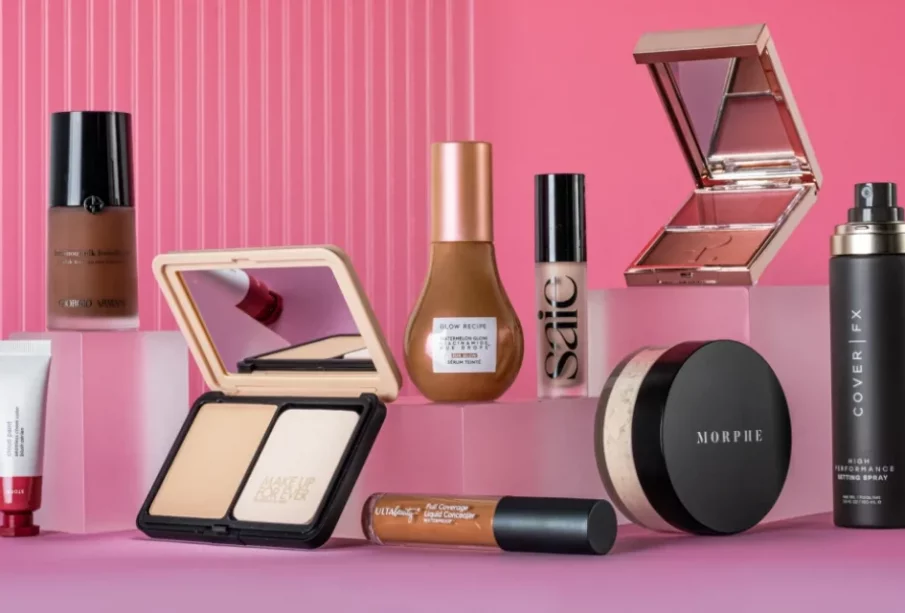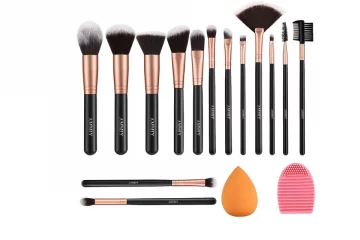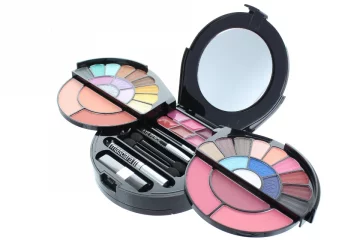Makeup Products: Enhancing Beauty with Innovation

Makeup Products | Bebevy
In the world of beauty and cosmetics, makeup products play a pivotal role in enhancing individuality and expression. From foundations that perfect skin tones to vibrant eyeshadows that accentuate eyes, each product serves a unique purpose in creating diverse looks. The evolution of makeup has been marked by innovation, catering to a wide range of preferences and skin types. This article explores the fascinating realm of makeup products, highlighting their impact on beauty routines and the industry’s continual evolution.
Understanding Makeup Products
Makeup products encompass a vast array of items designed to enhance facial features and overall appearance. These products are formulated using various ingredients that cater to different skin types, tones, and preferences. The primary categories of makeup products include:
- Foundations and Concealers
- Foundations are base makeup products that even out skin tone and provide a smooth canvas for other makeup.
- Concealers are used to cover blemishes, dark circles, and imperfections with targeted application.
- Eye Makeup
- Eyeshadows come in diverse colors and textures, allowing for creative eye looks.
- Eyeliners define eyes and enhance their shape, available in pencil, liquid, and gel forms.
- Mascara lengthens and volumizes eyelashes, accentuating the eyes.
- Lip Products
- Lipsticks offer a variety of shades and finishes, from matte to glossy, enhancing lip color and texture.
- Lip glosses provide shine and hydration, often with a tint of color.
- Lip liners define the lips’ shape and prevent lipstick from feathering.
- Cheek Products
- Blushes add a flush of color to the cheeks, creating a youthful appearance.
- Highlighters accentuate facial features by adding a luminous glow.
- Bronzers provide warmth and contour to the face, mimicking a sun-kissed look.
- Makeup Tools and Accessories
- Makeup brushes and sponges aid in precise and smooth application of products.
- Setting sprays and powders help makeup last longer and reduce shine.
The Evolution of Makeup Products
Over the years, makeup products have evolved significantly in terms of formulation, technology, and inclusivity. Initially, makeup was limited in variety and accessibility, often catering to a narrow range of skin tones and types. However, advancements in cosmetic science and changing societal norms have revolutionized the industry.
- Inclusive Formulations
- Modern makeup brands emphasize inclusivity, offering extensive shade ranges to accommodate diverse skin tones.
- Formulations have become more skin-friendly, incorporating natural ingredients and catering to sensitive skin.
- Technological Innovations
- Cosmetic technology has led to the development of long-wearing formulas, smudge-proof eyeliners, and waterproof mascaras.
- High-definition makeup products are designed to look flawless in both real life and under intense lighting, such as photography and filming.
- Sustainability and Ethical Practices
- There is a growing trend towards sustainable packaging and cruelty-free formulations among makeup brands.
- Consumers are increasingly mindful of the environmental impact of their beauty choices, driving brands to adopt eco-friendly practices.
Popular Makeup Trends and Influences
Makeup trends are constantly evolving, influenced by fashion, pop culture, and social media. Influencers and celebrities often dictate popular styles, leading to viral makeup trends that shape consumer preferences.
- Natural Makeup Looks
- Emphasizing minimalism and enhancing natural features with subtle makeup products like tinted moisturizers and nude lipsticks.
- Achieving a dewy, fresh-faced appearance with light coverage foundations and cream blushes.
- Bold and Experimental Styles
- Vibrant eyeshadow palettes with bold colors like electric blues, neon greens, and shimmering metallics.
- Dramatic winged eyeliner, graphic eyeliner designs, and artistic lip art showcasing intricate patterns and colors.
- Vintage and Retro Revivals
- Reviving classic makeup styles from past decades, such as 1920s flapper-inspired looks, 1950s pin-up girl glamor, and 1980s bold colors and contours.
- Retro influences in packaging design and formulations, appealing to nostalgia among consumers.
The Impact of Makeup Products on Self-Expression
Beyond aesthetics, makeup products play a significant role in self-expression and empowerment. Many individuals use makeup as a creative outlet to showcase their personalities, moods, and cultural influences. The act of applying makeup can be therapeutic, boosting confidence and fostering a sense of identity.
- Cultural Significance
- Makeup products often reflect cultural traditions and customs, with specific colors and techniques holding symbolic meanings.
- Cultural appropriation concerns prompt dialogue within the beauty industry regarding respectful representation and acknowledgment of origins.
- Empowerment and Confidence
- Makeup products empower individuals to experiment with different looks, express themselves authentically, and embrace their unique features.
- The beauty community celebrates diversity, encouraging self-love and confidence regardless of societal beauty standards.
Challenges and Future Directions in Makeup Product Development
While the makeup industry thrives on innovation and creativity, it faces challenges related to sustainability, inclusivity, and consumer education. Brands are increasingly challenged to meet consumer expectations for transparency in ingredient sourcing, environmental impact, and product efficacy.
- Environmental Impact
- The cosmetics industry generates significant plastic waste from packaging and single-use products.
- Sustainable initiatives include refillable packaging, biodegradable materials, and recycling programs to minimize environmental footprint.
- Inclusivity and Representation
- Despite progress, inclusivity gaps remain in shade ranges and product accessibility for diverse skin tones and undertones.
- Advocacy efforts push for improved representation in marketing campaigns and product development processes.
- Consumer Education
- Educating consumers about ingredient safety, skincare benefits, and proper makeup application techniques enhances product efficacy and user satisfaction.
- Brands leverage digital platforms and tutorials to educate consumers on product usage, ingredient benefits, and industry trends.
Conclusion
Makeup products continue to evolve as essential tools for self-expression, creativity, and confidence in today’s beauty landscape. From innovative formulations to inclusive shade ranges and sustainable practices, the industry adapts to meet diverse consumer needs and preferences. As trends shift and societal values evolve, makeup products remain integral to personal beauty routines and cultural expressions worldwide. Embracing the transformative power of makeup, individuals celebrate their unique identities and redefine beauty standards with every brushstroke and application.
In conclusion, makeup products transcend mere cosmetics—they embody creativity, empowerment, and cultural significance, enriching lives and fostering a vibrant, inclusive beauty community.







